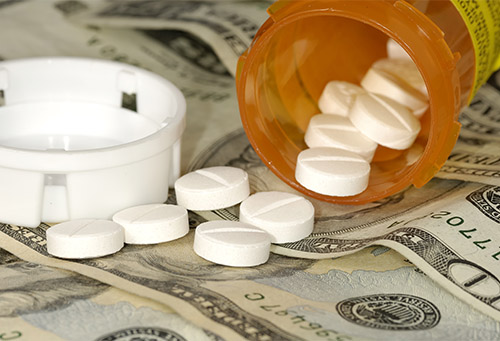
Pharmacy Pricing Q & A with Wayne Salverda
What do the latest Federal Drug Administration (FDA). External Link. Opens in new window. approvals tell us about the flow of new medications?
Annual drug approvals by the FDA serve as a barometer for research, innovation and industry efficiency. Year 2015 saw a record number of drug approvals; the FDA approved 45 drugs with never-before-sold ingredients in 2015.Today, one in 13 drugs in early stage development make it to market. This is a notable improvement from just a few years ago. Between 2007 and 2011, only one in 19 drugs reached the market.
What developments will have a significant impact on the market in the near future?
Here are some significant developments that are likely to impact the marketplace:
-
-
- Orphan drugs – those drugs used to treat rare diseases or conditions that affect 200,000 or fewer individuals – are becoming more and more common. Treatment costs for these drugs often exceed $200,000 or more annually.
- New cancer treatments are coming to market with monthly treatment costs averaging $10,000 or more.
- The first of the PCSK9 Inhibitors, a new class of drugs to treat high cholesterol with annual costs of about $14,000, was approved in 2015. While these drugs have gotten off to a relatively slow start, they will gain momentum as more competition joins the market and as clinical studies are completed to support their use in broader populations.
- The first biosimilar was approved in the U.S. in 2015. Zarxio, a non-interchangeable biosimilar of Neupogen. External Link. Opens in new window., came to market with a cost about 15 percent less than its “originator” medication. This was less than the 20 to 30 percent discount often seen in the E.U. for biosimilars. Modest discounts can quickly add up when average claim costs are between $1,500 and $5,000.
- While the first gene therapy has been approved in the European Union (E.U.) at a treatment cost in excess of $1 million, these types of therapies likely won’t be seen in the U.S. for a few years yet.
-
Specialty drugs to treat liver disease have been costly in recent years. What’s ahead in this area?
More treatments for liver diseases are emerging. Here are developments to watch:
-
-
- Another wave of Hepatitis C treatments with broader spectrums and even shorter treatment durations is coming soon. Currently, the cost of a 12-week treatment course for hepatitis C may range from $54,000 to $150,000 without rebates. It’s estimated at least 3 million and possibly as many as 7 million individuals may be infected with Hepatitis C in the U.S. Up to 75 percent of these individuals may not even know they are infected. In 2014, only about 170,000 individuals were treated for Hepatitis C while about 249,000 were treated in 2015; there are many more yet to be diagnosed and treated.
- Significant research and development is also underway for Nonalcoholic Steatohepatitis (NASH) or silent liver disease. This is characterized by inflammation and damage due to a buildup of fat deposits. NASH is currently estimated to affect 2 to 5 percent of Americans but is becoming more common. The obesity epidemic in America may be a contributing factor; more than one-third (34.9 percent or 78.6 million) of U.S. adults are obese.
-
Which drugs have been the biggest culprits in increasing prescription pricing for employers and their employees?
Specialty drugs continue to be a larger and larger contributor to overall trend, however, the category of chronic preventive, maintenance or symptomatic drugs was the largest contributor to trend in 2015. This includes drugs for cardiovascular disease, asthma, neurologic disorders, arthritis, osteoporosis, depression and diabetes.
Congress held hearings on pharmacy pricing and presidential candidates are also talking about them. What does that mean for drug prices?
Egregious drug price increases are not new. However, the publicity they receive tends to cycle with major political interests and campaigns to serve as a rally cry. Politicians tend to leverage the isolated and extreme situations to gain press exposure. Meanwhile, the less extreme but still significant and much more frequent and common price increases, which actually add more to overall costs, go relatively unchallenged. While specialty drugs are a major driver for increasing costs and trends into the future, the actual overall contribution of increasing drug costs and trends in 2015 was due to the inflation of non-specialty brand drugs.
Meaningful changes are unlikely to come about from the Congressional hearings without a fundamental change to the workings of today’s political system; the influence of industry and lobbyists on policy and legislation in the United States is too great.
Plan sponsors concerned about pharmacy prices need to take active measures now to provide a benefit that aligns incentives and leverages their Pharmacy Benefit Manager arrangements to their advantage. A sound plan design is key.
[box]
Learn More about Pharmacy Pricing
[/box]








